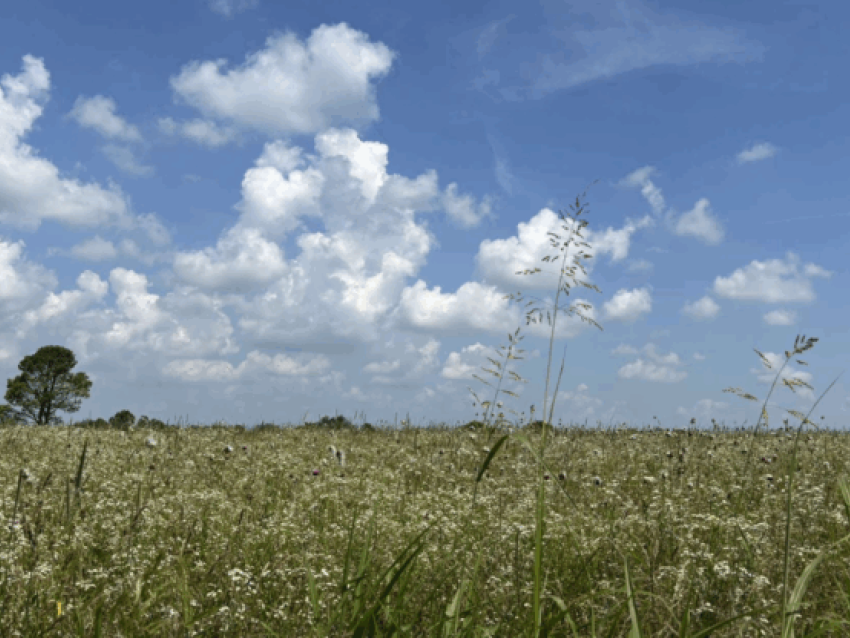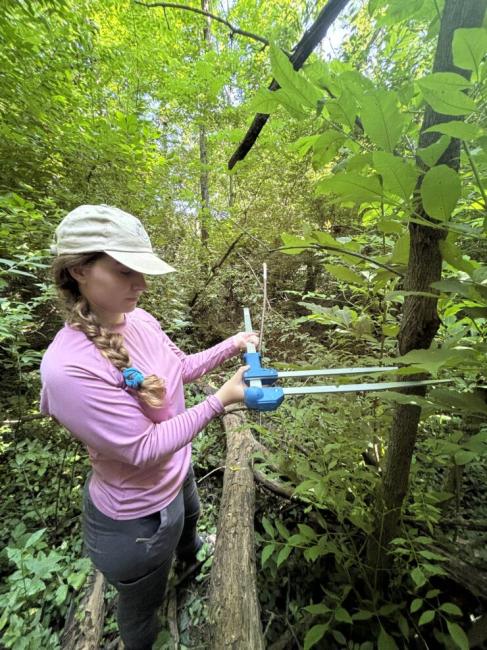
Understanding the resilience of Kentucky ash trees at reforested sites UK Sustainability's WholeSum
For over 20 years, Reforest the Bluegrass has been Lexington’s premier community tree planting festival, resulting in the planting of more than 215,000 tree seedlings. It has started to increase canopy coverage in the city of Lexington. While about 65% of the trees planted survive their first year, what do these sites look like after a longer span – say, 20 years? And how do invasive pests affect the long-term health of these new forests?
As one of the UK’s 2025 Summer Sustainability Research Fellows, my research explores the extent of emerald ash borer infestation in ash trees at reforested park sites around Lexington and the resulting impacts on forest health.
The emerald ash borer is an invasive, wood-boring beetle that has killed millions of ash trees across 37 U.S. states and 7 Canadian provinces since it arrived in North America roughly 30 years ago. Ash trees are not only native to Kentucky, but they are also popular in landscaping and lumber production, making their decline particularly significant.
Emerald Ash Borer resting on Ash tree. Photo taken by David Cappaert, The UK Entomology department
My research looks at whether ash trees are growing back in Reforest the Bluegrass sites, and whether or not they are doing it on their own, without human help. When ash trees die and fall, they leave behind coarse woody debris – which are basically large logs and branches on the forest floor. This debris provides habitat and shelter for wildlife like amphibians and insects. So, understanding how many ash trees are alive or dead at these sites, how big they are, and how much fallen wood is present can tell us a lot about the ecological health of these forests. By looking at Reforest the Bluegrass sites planted over the past 25 years, I can take a closer look at how the age of the forest affects emerald ash borer damage and the ability of ash trees to bounce back.
McComas uses calipers to record the diameter of ash trees. This helps her determine which size class each tree falls into.
My day-to-day work varies depending on the weather and what needs to be done. On days where surveying is the priority, I visit Reforest the Bluegrass sites to walk transects (essentially a straight line cutting through a landscape) to search for ash trees and record data like species, size, infestation status, and coordinates. This information helps me understand the presence, health, and distribution of ash at each location.
On days focused on sampling, I visit pre-established plots to identify ash trees and measure coarse woody debris. For large, overstory ash trees, I note their diameter at breast height, recent woodpecker activity, canopy dieback, and species. These details help me evaluate the tree’s health and level of infestation. For example, extensive canopy dieback suggests stress or other underlying health issues, and recent woodpecker marks might indicate that a tree is infested with a pest, such as the emerald ash borer.
Starting this project, I wasn’t very optimistic about the state of ash in Reforest the Bluegrass sites, especially given the presence of invasive species such as Amur honeysuckle, wintercreeper, and the emerald ash borer. However, I’ve been pleasantly surprised to find large, healthy ash producing seeds at a few sites! The fact we have large, healthy and uninfected trees is good news for the future of ash at these sites.
Another rewarding aspect of this work has been finding wildlife – particularly amphibians and reptiles – thriving in these urban reforestation sites!
An American toad found at the Masterson Station 2001 Reforest the Bluegrass site.McComas holds an Eastern box turtle found at the Veterans Park 2003 Reforest the Bluegrass site.
Ultimately, I hope my research improves our understanding of the health and development of Reforest the Bluegrass sites. By highlighting ash health and decline in these sites, I aim to support more informed management decisions and assist Lexington Parks and Recreation in identifying areas where interventions can help our ash populations.

